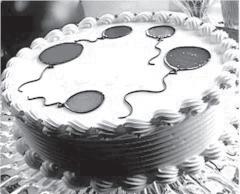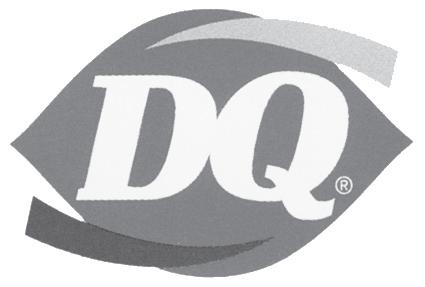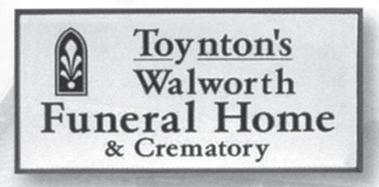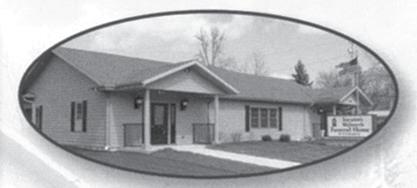Fire Prevention Safety first































The National Fire Protection Association – the official sponsor of Fire Prevention Week for more than 100 years –has announced “Cooking safety starts with YOU! Pay attention to fire prevention” as the theme for Fire Prevention Week, which will be Oct. 8-14.
This year’s focus on cooking safety works to educate the public about simple but important steps they can take to help reduce the risk of fire when cooking at home, keeping themselves and those around them safe.
According to the NFPA, cooking is the leading cause of home fires, with nearly half (49 percent) of all home fires involving cooking equipment; cooking is also the leading cause of home fire injuries.
Unattended cooking is the leading cause of home cooking fires and related deaths. In addition, NFPA data shows that cooking is the only major cause of fire that resulted in more fires and fire deaths in 2014-2018 than in 1980-1984.
“These numbers tell us that more public awareness is needed around when and where cooking hazards exist, along with ways to prevent them,” said Lorraine Carli, vice president of the Outreach and Advocacy at NFPA.

“This year’s Fire Prevention Week campaign will work to promote tips, guidelines, and recommendations that can help significantly reduce the risk of having a cooking fire,” Carli added.
“Staying in the kitchen, using a timer, and avoiding distractions that remove your focus from what’s on the stove are among the key messages for this year’s Fire Prevention Week campaign,” she said.
The NFPA offers the following tips about safely cooking and preventing fires. Keep objects away from heat
Keep anything that can catch fire–oven mitts, wooden utensils, food packaging, towels, curtains–away from your stovetop.
Keep the stovetop, burners, and oven clean.
Wear short, close-fitting, or tightly rolled sleeves when cooking. Loose clothing can dangle onto stove burners and can catch fire if it comes in contact with a gas flame or an electric burner.
Keep things that can catch fire away from heat sources. Never use your oven or microwave as storage space. This can cause a fire.
Always keep a lid nearby when you are cooking. If a small grease fire starts in a pan, smother the flames by sliding the lid over the pan. Turn off the burner. Do not move the pan. To keep the fire from restarting, leave the lid on until the pan has cooled.
Never pour water on a cooking pan grease fire.
Only trained adults should use a fire extinguisher on a grease fire. Only Class K fire extinguishers are rated for the purpose of putting out grease and animal fat fires.
In case of an oven fire, turn off the heat and keep the door closed until it is cool. Only open the door once you are confident the fire is completely out, standing to the side as you open the oven door.
After a fire, the oven should be checked by a licensed professional and/or serviced before being used again. When in doubt, just get out! When you leave, close the door behind you to help contain the fire. After you leave, call 9-1-1
• CONTINUED ON PAGE 4
According to the National Fire Protection Association, cooking is the leading cause of home fires. This year’s theme for Fire Prevention Week is “Cooking safety starts with YOU! Pay attention to fire prevention.”
The NFPA offers numerous tips and reminders to help keep people safe.
There are several steps that can be taken in an effort to ensure everyone safely escapes a home in the event of a fire.
Those steps, according to the NFPA, include installing smoke alarms in every sleeping room, outside each separate sleeping area, and on every level of the home, including the basement.
Larger homes may require additional smoke alarms to provide a minimum level of protection. Make sure everyone in your home knows the sound and understands the warning of the smoke alarm and knows how to respond.
Make an escape plan
Another important key is to make a home escape plan by drawing a map of each level of the home that shows all doors and windows. Then, go to each room and point to the two ways out.
Practice the plan with everyone in your household, including visitors.
Children, older adults, and people with disabilities may need assistance to wake up and get out. Make sure that someone will help them.
Teach your children how to escape on their own in case you are not there or not able to help them. Make sure they can open windows, remove screens, and unlock doors.
Practice your home fire escape drill with overnight guests.
Know at least two ways out of every room, if possible. Make sure all doors and windows that lead outside open.
If a room has a window air conditioner, make sure there is still a second way out of the room.
If allowed in your community and approved by code as a secondary means of escape, windows with
or the fire department from a mobile phone or a trusted neighbor’s phone.
Have a “kid-free zone” of at least 3 feet around the stove and areas where hot food or drink is prepared or carried.
Never hold a child while you are cooking, drinking a hot liquid, or carrying hot foods or liquids.
Keep pets off cooking surfaces and nearby countertops to prevent them from knocking things onto the burner.
Always use cooking equipment— slow cookers, electric skillets, hot plates, griddles, etc.—that is listed by a qualified testing laboratory.
Follow the manufacturer’s instructions and code requirements when installing, using, or cleaning cooking equipment.
Plug microwave ovens or other cooking appliances directly into a wall outlet.
Never use an extension cord for a cooking appliance—it can overload the circuit and cause a fire.
When possible, to prevent an electric stovetop fire, replace standard coil burners with temperature-limiting control electric coils. Make sure the replacement coils are listed by a qualified testing laboratory as compatible with the specific range.
When replacing an electric coil cooktop, consider a temperature limiting appliance
security bars, grills, or safety guards should have easyto-use quick-release devices that are accessible from inside the home.
A closed door may slow the spread of smoke, heat, and fire.
Install smoke alarms in every sleeping room and outside each separate sleeping area. For the best protection, make sure all smoke alarms are interconnected. When one smoke alarm sounds, they all sound.
If you sleep with the bedroom door closed, install smoke alarms inside and outside the bedroom. For the best protection, make sure all smoke alarms are interconnected. When one smoke alarm sounds, they all sound.
Make sure everyone in your home knows how to call 9-1-1, or your local emergency number, from a mobile phone or a trusted neighbor’s phone. Have an outside meeting place (something permanent, like a tree, light pole, or mailbox) a safe distance in front of the home where firefighters will easily find you.
Make sure your house number can be seen from the street both day and night.
Push the smoke alarm button to start the drill. Practice what to do in case there is smoke. Get low and go. Get out fast.
Practice using different ways out. 4.2.4 Close doors behind you as you leave. Get out and stay out. Never go back inside for people, pets, or things.
Go to your outside meeting place.
Practice your home fire escape drill at least twice a
to prevent cooking fires.
Check electrical cords or any part of the appliance for cracks, breaks, damage, or overheating. Have a professional repair the appliance or cord as needed or replace the appliance.
Place cooking equipment where it won’t get bumped or knocked over.
year with everyone in your home. Practice at night and during the daytime.
After you have practiced your home fire escape drill, evaluate it and discuss what worked and what needs to be improved. Improve it and practice again.
When the smoke alarm sounds, get out and stay out. Go to the outside meeting place. Call 9-1-1 or the fire department.
If there is smoke blocking the door or first way out, use your second way out.
Smoke is poisonous. If you must escape through smoke, get low and go under the smoke to your way out.
Before opening a door, feel the doorknob and then the door. If either is hot, leave the door closed and use your second way out.
If there is smoke coming in from around the door, leave the door closed and use your second way out.
If you open a door, open it in a slow manner. Be ready to shut it if heavy smoke or fire is present.
If you cannot get out, close the door and cover vents and cracks around the door with cloth or tape to keep smoke out. Call 9-1-1 or your fire department. Say where you are and then signal for help at the window with a flashlight or a light-colored cloth.
If you cannot get to someone needing assistance, leave the home and call 9-1-1 or the fire department. Tell the emergency operator where the person is located.
If pets are trapped inside your home tell firefighters right away. Never re-enter a burning building.
Do not operate a hot plate, griddle, or electric skillet with a damaged cord or plug.
Unplug a hot plate, griddle, or electric skillet when not in use and before cleaning. Allow the appliance to cool before cleaning it.
accurately on the microwave oven so that food does not burn and/or start a fire. Microwave oven wattages vary. Never heat a baby bottle in a microwave oven because it heats liquids unevenly. Heat baby bottles in warm water from the faucet.
Stay
A slow cooker is designed to be left on while you do other things, even things outside of the home. That said, there are conditions:
Follow the manufacturer’s instructions on where and how to use a slow cooker. Keep things that could catch fire away from the slow cooker.
Inspect the cord to the slow cooker to be sure that it has not been damaged. Do not use any appliance with a damaged cord.
Make sure the slow cooker is in a place where it won’t get bumped. If the lid gets dislodged, the liquid could boil away, the appliance could overheat, and a fire could occur.
Follow the manufacturer’s instructions when using a hot plate, griddle, or electric skillet.
Stay with the hot plate, griddle, or electric skillet when cooking.
Touching the surface of a hot plate, griddle, or electric skillet can burn you. Avoid touching the surface.
Do not immerse heat control, cord, or plug of a hot plate, griddle, or electric skillet in water or other liquid.
Always keep microwave ovens clean and free of clutter.
Place or install the microwave oven at a safe height within easy reach of all users. If possible, the face of the person using the microwave oven should be higher than the front of the microwave oven door to reduce the risk of a scald.
Always supervise children when they are using the microwave oven.
Use only microwave-safe cookware (containers or dishes). Never use aluminum foil or metal objects in a microwave oven.
Do not leave a microwave oven unattended when microwaving popcorn, since the heat buildup can cause fires. Heat the popcorn according to the written instructions.
Open microwaved food away from the face. Hot steam escaping from a container of microwaved food, or the food itself, can cause burns.
Verify cooking time and set the timer
If your microwave oven is mounted over your stove, use extra caution to reduce the risk of spills and scalds. Avoid leaning over hot burners or pans when putting things in or getting them out of the microwave oven.
If you have a fire in your microwave oven, turn it off immediately. This will stop the fan, so it won’t feed oxygen to the flames. Do not open the oven door until the fire is out. If in doubt, call the fire department.
Founded in 1896, NFPA is a global self-funded nonprofit organization devoted to eliminating death, injury, property, and economic loss due to fire, electrical and related hazards.
The association delivers information and knowledge through more than 300 consensus codes and standards, research, training, education, outreach and advocacy; and by partnering with others who share an interest in furthering the NFPA mission.
For more information, visit www.nfpa. org.
Carbon monoxide (CO) is a gas you cannot see, taste, or smell. It is often called “the invisible killer.” It is created when fossil fuels such as kerosene, gasoline, coal, natural gas, propane, methane, or wood don’t burn completely. CO gas can kill people and pets.
Carbon monoxide poisoning can result from gas-, gasoline-, and diesel- fueled vehicles idling inside garages or from malfunctioning or improperly vented water heaters, clothes dryers, furnaces and other heating appliances, and portable generators.
Headache, nausea, and drowsiness are symptoms of carbon monoxide poisoning.
Exposure to carbon monoxide can be fatal.
The National Fire Protection Association offers the following tips and reminders related to carbon monoxide.
Choose a carbon monoxide alarm that is listed by a qualified testing laboratory.
lnstall and maintain CO alarms inside your home to provide early warning and reduce risk of death from carbon monoxide.
When traveling or staying away from home, bring a travel carbon monoxide alarm.
Install and maintain carbon monoxide alarms outside each separate sleeping area, on every level of the home, and in other locations as required by laws, codes, or standards. Follow the manufacturer’s instructions for placement and mounting height.
For the best protection, have CO alarms that are interconnected throughout the home. When one sounds, they all sound.
If you have combination smoke–carbon monoxide alarms, follow the directions for smoke alarm installation.
Carbon monoxide alarms are not substitutes for smoke alarms and vice versa. Know the difference between the sound of smoke alarms and the sound of CO alarms.
Test carbon monoxide alarms at least once a month and replace them if they fail to respond when tested. The sensors in CO alarms have a limited life. Replace the CO alarm according to manufacturer’s instructions or when the end-of-life signal sounds.
Know the difference between the sound of the carbon monoxide alarm and the smoke alarm, and the low-battery signals. If the audible low-battery signal sounds, replace

Over a five-year period beginning in 2015 and 2019, fire departments across the United States responded to roughly 347,000 home structure fires per year. That data, courtesy of the National Fire Protection Association, underscores the significance of home fire protection measures.
Smoke detectors are a key component of fire protection, but there’s much more homeowners can do to protect themselves, their families, their belongings, and their homes from structure fires.
• Routinely inspect smoke detectors. Smoke detectors can only alert residents to a fire if they’re working properly. Batterypowered smoke detectors won’t work if the batteries die.
Routine smoke detector check-ups can ensure the batteries still have juice and that the devices themselves are still functioning properly. Test alarms to make sure the devices are functioning and audible in nearby rooms. Install additional detectors as necessary so alarms and warnings can be heard in every room of the house. Working smoke alarms save lives, cutting the risk of dying in a home fire in half. Smoke alarms should be installed and maintained in every home.
The NFPA offers the following tips and reminders on proper installation of smoke alarms, testing and maintenance of the units and more.
Install smoke alarms in every sleeping room, outside each separate sleeping area, and on every level of the home. Install alarms in the basement. Larger homes may require additional smoke alarms to provide a minimum level of protection.
Interconnect all smoke alarms throughout the home for the best protection. When one sounds, they all sound. Make sure you can hear the sound of the smoke alarm.
It is especially important to have interconnected smoke alarms, if you sleep with doors closed.
Smoke alarms can be interconnected electrically by a qualified electrician or by installing battery-operated wireless interconnected smoke alarms.
For the best protection or where extra time is needed to awaken or assist others, both ionization smoke alarms and photoelectric smoke alarms or combination ionization-photoelectric alarms, also known as dual sensor smoke alarms, are recommended.
An ionization smoke alarm is more responsive to flaming fires, and a photoelectric smoke alarm is more responsive to smoldering fires.
Choose a smoke alarm that is listed by a qualified testing laboratory.
Install smoke alarms away from the kitchen to prevent nuisance alarms. They should be at least 10 feet from a cooking appliance.
Photoelectric smoke alarms are the best type of alarms to be installed near the kitchen and bathrooms to reduce nuisance alarms.
New multi-criteria smoke alarm technology will state “helps reduce cooking nuisance alarms” on the packaging. Consider using new multicriteria alarms when it is time to replace existing photoelectric or ionization alarms.
Test smoke alarms at least once a month using the test button.
Make sure everyone in the home understands the sound of the smoke alarm and knows how to respond.
Follow the manufacturer’s instructions for cleaning to keep smoke alarms working. The instructions are included in the package or can be found on the internet.
Install smoke alarms and alert devices that meet the needs of people who are deaf or hard of hearing.
When the smoke alarm sounds, strobe lights flash to alert people who are deaf or hard of hearing of a possible fire when they are awake.
When people who are deaf are asleep, a pillow or bed shaker should be used to wake them and alert them to fire conditions so they can escape. This device is activated by the sound of a standard smoke alarm. People who are deaf may find that the shaker paired with a highintensity strobe light is helpful to wake them.
When people who are hard of hearing are asleep, a loud, mixed, low- pitched sound alert device should be used to wake them. They may find a pillow or bed shaker is helpful to wake them. These devices are activated by the sound of the standard smoke alarm.
Choose smoke alarms and accessories for people who are deaf or hard of hearing that are listed by a qualified testing laboratory.
Smoke alarms with non-replaceable (long-life) batteries are designed to remain effective for up to 10 years. If the alarm chirps, warning that the battery is low, replace the entire smoke alarm right away.
For smoke alarms that do not have non-replaceable (long-life) batteries, replace batteries at least once a year. If the alarm chirps, replace only the battery.
Replace all smoke alarms when they are 10 years old.
• CONTINUED ON PAGE 11








Draw a map of your home. Show all doors and windows. Visit each room. Find two ways out.
All windows and doors open easily. You should be able to use them to get outside.
Make sure your home has smoke alarms. Push the test button to make sure each alarm is working. Pick an outside meeting place a safe distance from your home where everyone should meet.
The house or building number can be seen from the street.
Make sure your plan meets the needs of all your family members, including those with sensory or physical disabilities.
Everyone in the home should know the fire department’s emergency number and how to call once they are safely outside.
Practice your home fire drill at least twice a year with everyone in the household, including guests. Practice at least once during the day and at night.
There is no denying the beauty candles can bring to a home when they are flickering delicately. But they have open flames, so caution must reign supreme when they are in use.
The U.S. Consumer Product Safety Commission says 85 percent of candle fires can be prevented by following some key safety precautions. Here are some reminders on how to burn candles safely.
• Always trim wicks to 1⁄4-inch before burning candles. Long or crooked wicks can cause uneven burning, dripping or flaring.
• Keep candles at least 12 inches away from anything that can burn.
• Use candle holders that are sturdy and will not tip over easily.
• Use a long match or long lighter to light candles to prevent fingers and hands from getting too close to the flames.
• Run used matches under water to cool them down and prevent fires from occurring after matches are disposed in the trash.
• Never leave a candle unattended. It should be in sight at all times.

• Place and store candles beyond the reach of children and pets where they will be less likely to get knocked over.
• Never touch or move a candle while it is burning or while the wax is liquefied.
• Place candles on stable, heat-resistant surfaces.
• Keep candles away from drafts, vents and air currents.
• Follow candle manufacturers’ recommendations on burn time and proper use.
• When utilizing multiple candles, place them at least three inches apart from one another. This reduces the chances
Candles
for the candles to melt one another, or create their own drafts that will cause the candles to burn improperly.
• Extinguish a candle if the flame becomes too high or flickers repeatedly.
• Refrain from burning a candle longer
than three hours at a time, and never burn a candle when there is less than one centimeter of wax at the base.
• Use a candle snuffer to safely extinguish a candle, and make sure the candle is completely out (wick ember is
no longer glowing) before leaving the room.
Candles can be awe-inspiring components of decor. But caution must always be the top priority when lighting candles inside a home.
As a general rule, firefighting should be left to the professionals. Fire extinguishers are meant for putting out small fires or to help escape from the area, not firefighting large out-of-control fires, according to the National Fire Protection Association. Keep the following in mind before or while using a fire extinguisher.
• Only those who are trained or know how to use a portable fire extinguisher should use one.
• Only those who are trained or know how to use a portable fire extinguisher can recognize an approved one.
Before trying to put out or contain a fire, be sure that:
– You know how to use the fire extinguisher and it is the correct type
– Everyone else is leaving the home and someone is calling the fire department
– The fire is small, confined, and not spreading
– You have a clear escape route and will not be overcome by smoke or toxic fumes
• If the fire does not go out after using one extinguisher, back out of the area, close the door if possible, and get safely outside and call 9-1-1.
• If you have portable fire extinguishers, inspect them once a month and have them serviced annually by certified personnel. Check to see if your fire extinguisher is under any U.S.
Consumer Product Safety Commission recalls.
• Where portable fire extinguishers are installed in the home, follow the manufacturer’s instructions for placement and mounting height.
• As a general rule, where portable fire extinguishers are installed, a person should not have to travel more than 40 feet to reach one and never have to travel up or down stairs to reach it.

NFPA believes that children should not be trained how to operate portable fire extinguishers. Teaching children to use portable fire extinguishers runs counter to NFPA messaging to get out and stay out if there is a fire.
Furthermore, children may not have the maturity to operate a portable fire extinguisher properly or decide whether or not a fire is small enough to be put out by the extinguisher.
They may not have the physical ability to handle the extinguisher or dexterity to perform the complex actions required to put out a fire. In the process of extinguishing flames, children may not know how to respond if the fire spreads.
NFPA continues to believe that only adults who know how to operate portable fire extinguishers should use them.
can be awe-inspiring components of decor. But caution must always be the top priority when lighting candles inside a home.
The Great Chicago Fire was a conflagration that burned in the City of Chicago during Oct. 8–10, 1871. The fire killed approximately 300 people, destroyed roughly 3.3 square miles of the city including over 17,000 structures, and left more than 100,000 residents homeless.
The fire began in a neighborhood southwest of the city center. A long period of hot, dry, windy conditions, and the wooden construction prevalent in the city, led to the conflagration. The fire leapt the south branch of the Chicago River and destroyed much of central Chicago and then leapt the main branch of the river, consuming the near north side. Help flowed to the city from near and far after the fire. The city government improved building codes to stop the rapid spread of future fires and rebuilt rapidly to those higher standards. A donation from the United Kingdom spurred the establishment of the Chicago Public Library.
The fire is claimed to have started at about 8:30 p.m. on Oct. 8, in or around a small barn belonging to the O’Leary family that bordered the alley behind 137 DeKoven St. The shed next to the barn was the first building to be consumed by the fire.
City officials never determined the cause of the blaze but the rapid spread of the fire due to a long drought in that year’s summer, strong winds from the southwest, and the rapid destruction of the water pumping system, explain the extensive damage of the mainly wooden city structures.
There has been much speculation over the years on a single start to the fire. The most popular tale blames Mrs. O’Leary’s cow, who allegedly knocked over a lantern; others state that a group of men were gambling inside the barn and knocked over a lantern.
Still other speculation suggests that
the blaze was related to other fires in the Midwest that day.
The fire’s spread was aided by the city’s use of wood as the predominant building material in a style called balloon frame. More than two-thirds of the structures in Chicago at the time of the fire were made entirely of wood, with most of the houses and buildings being topped with highly flammable tar or shingle roofs.
All of the city’s sidewalks and many roads were also made of wood. Compounding this problem, Chicago received only 1 inch of rain from July 4 to Oct. 9, causing severe drought conditions before the fire, while strong southwest winds helped to carry flying embers toward the heart of the city.
In 1871, the Chicago Fire Department had 185 firefighters with just 17 horsedrawn steam pumpers to protect the entire city. The initial response by the fire department was timely, but due to an error by the watchman, Matthias Schaffer, the
firefighters were initially sent to the wrong place, allowing the fire to grow unchecked.
An alarm sent from the area near the fire also failed to register at the courthouse where the fire watchmen were, while the firefighters were tired from having fought numerous small fires and one large fire in the week before. These factors combined to turn a small barn fire into a conflagration.
When firefighters finally arrived at DeKoven Street, the fire had grown and spread to neighboring buildings and was progressing toward the central business district. Firefighters had hoped that the south branch of the Chicago River and an area that had previously thoroughly burned would act as a natural firebreak.
All along the river, however, were lumber yards, warehouses, and coal yards,

and barges and numerous bridges across the river. As the fire grew, the southwest wind intensified and became superheated, causing structures to catch fire from the heat and from burning debris blown by the wind. Around midnight, flaming debris blew across the river and landed on roofs and the South Side Gas Works.
With the fire across the river and moving rapidly toward the heart of the city, panic set in. About this time, Mayor Roswell B. Mason sent messages to nearby towns asking for help. When the courthouse caught fire, he ordered the building to be evacuated and the prisoners jailed in the basement to be released.
At 2:30 a.m. on the Oc. 9, the cupola of the courthouse collapsed, sending the great bell crashing down. Some witnesses reported hearing the sound from a mile away.
As more buildings succumbed to the flames, a major contributing factor to the fire’s spread was a meteorological phenomenon known as a fire whirl. As overheated air rises, it comes into contact with cooler air and begins to spin, creating a tornado-like effect. These fire whirls are likely what drove flaming debris so high and so far.
Such debris was blown across the main branch of the Chicago River to a railroad car carrying kerosene. The fire had jumped the river a second time and was now raging across the city’s north side.

Despite the fire spreading and growing rapidly, the city’s firefighters continued to battle the blaze. A short time after the fire jumped the river, a burning piece of timber lodged on the roof of the city’s waterworks. Within minutes, the interior of the building was engulfed in flames and the building was destroyed. With it, the
city’s water mains went dry and the city was helpless. The fire burned unchecked from building to building, block to block.
Finally, late into the evening of Oct. 9, it started to rain, but the fire had already started to burn itself out. The fire had spread to the sparsely populated areas of the north side, having consumed the densely populated areas thoroughly.
Once the fire had ended, the smoldering remains were still too hot for a survey of the damage to be completed for many days. Eventually, the city determined that the fire destroyed an area about 4 miles long and averaging 3⁄4 mile wide, encompassing an area of more than 2,000 acres.
Destroyed were more than 73 miles of roads, 120 miles of sidewalk, 2,000 lampposts, 17,500 buildings, and $222 million in property, which was about a third of the city’s valuation in 1871.
On Oct. 11, 1871, General Philip H. Sheridan came quickly to the aid of the city and was placed in charge by a proclamation, given by mayor Roswell B. Mason: “The Preservation of the Good Order and Peace of the city is hereby intrusted to Lieut. General P.H. Sheridan, U.S. Army.”
To protect the city from looting and violence, the city was put under martial law for two weeks under Gen. Sheridan’s command structure with a mix of regular troops, militia units, police, and a specially organized civilian group “First Regiment of Chicago Volunteers.” Former Lieutenant-Governor William Bross, and part owner of the Tribune, later recollected his response to the arrival of Gen. Sheridan and his soldiers: “Never did deeper
emotions of joy overcome me. Thank God, those most dear to me and the city as well are safe.”
General Philip H. Sheridan, who saved Chicago three times: the Great Fire in October 1871, when he used explosives to stop the spread; again after the Great Fire, protecting the city; and lastly in 1877 during the “communist riots,” riding in from 1,000 miles away to restore order.
For two weeks Sheridan’s men patrolled the streets, guarded the relief warehouses, and enforced other regulations. On October 24 the troops were relieved of their duties and the volunteers were mustered out of service.
Of the approximately 324,000 inhabitants of Chicago in 1871, 90,000 Chicago residents (1 in 3 residents) were left homeless. One hundred twenty bodies were recovered, but the death toll may have been as high as 300. The county coroner speculated that an accurate count was impossible, as some victims may have drowned or had been incinerated, leaving no remains.
In the days and weeks following the fire, monetary donations flowed into Chicago from around the country and abroad, along with donations of food, clothing, and other goods. These donations came from individuals, corporations, and cities.
New York City gave $450,000 along with clothing and provisions, St. Louis gave $300,000, and the Common Council of London gave 1,000 guineas, as well as money from private donations. In Greenock, Scotland (pop. 40,000) a town meeting raised money on the spot. Cincinnati, Cleveland, and Buffalo, all commercial rivals, donated hundreds and thousands of dollars. Milwaukee, along
with other nearby cities, helped by sending fire-fighting equipment.
Food, clothing and books were brought by train from all over the continent. Mayor Mason placed the Chicago Relief and Aid Society in charge of the city’s relief efforts. Operating from the First Congregational Church, city officials and aldermen began taking steps to preserve order in Chicago. Price gouging was a key concern, and in one ordinance, the city set the price of bread at 8¢ for a 12-ounce loaf.
Public buildings were opened as places of refuge, and saloons closed at 9 in the evening for the week following the fire. Many people who were left homeless after the incident were never able to get their normal lives back since all their personal papers and belongings burned in the conflagration.
After the fire, A. H. Burgess of London proposed an “English Book Donation”, to spur a free library in Chicago, in their sympathy with Chicago over the damages suffered. Libraries in Chicago had been private with membership fees.
In April 1872, the City Council passed the ordinance to establish the free Chicago Public Library, starting with the donation from the United Kingdom of more than 8,000 volumes.
The fire also led to questions about development in the United States. Due to Chicago’s rapid expansion at that time, the fire led to Americans reflecting on industrialization. Based on a religious point of view, some said that Americans should return to a more old-fashioned way of life, and that the fire was caused by people ignoring traditional morality.
On the other hand, others believed that a
SMOKE ALARMS • CONTINUED FROM PAGE 5
Replace any smoke alarm that does not respond after a new battery has been installed.


Replace combination smoke–carbon monoxide alarms according to the manufacturer’s recommendations.

Rental housing
All rental housing must have working smoke alarms.
Be sure smoke alarms are installed in all rental housing. Contact your landlord, property manager, or fire department for help.
Check with your local fire or building department for information about state and local ordinances on smoke alarm installation and maintenance in rental housing.
Maintenance of the smoke alarms may be the responsibility of the landlord or the renter, depending on the rental agreement. Maintain the smoke alarm in accordance with the manufacturer’s instructions.
CARBON MONOXIDE ALARMS • CONTINUED FROM PAGE 5
the batteries or replace the device. If the CO alarm still sounds, get to a fresh air location and call 9-1-1 or the fire department.
To keep carbon monoxide alarms working, follow manufacturer’s instructions for cleaning. The instructions are included in the package or can be found on the internet.
Have gas appliances, fuel-burning heating equipment, and chimneys inspected per the manufacturer’s instructions.

Before using the fireplace, open the damper for proper ventilation. When finished, leave the damper open until the fire is completely extinguished to prevent smoke and gases generated by embers from entering the home. Never use an oven or stovetop to heat your home.
Purchase heating and cooking equipment that is listed by a qualified testing laboratory. Vent the exhaust from fuel-burning equipment to the outside to avoid carbon monoxide (CO) poisoning. Keep the venting clear and unblocked.

lesson to be learned from the fire was that cities needed to improve their building techniques.
Frederick Law Olmsted observed that poor building practices in Chicago were a problem:
Chicago had a weakness for “big things,” and liked to think that it was outbuilding New York. It did a great deal of commercial advertising in its housetops. The faults of construction as well as of art in its great showy buildings must have been numerous. Their walls were thin and were overweighted with gross and coarse mis-ornamentation.

Olmsted also believed that with brick walls, and disciplined firemen and police, the deaths and damage caused would have been much less.
Almost immediately, the city began to rewrite its fire standards, spurred by the efforts of leading insurance executives, and fireprevention reformers such as Arthur C. Ducat. Chicago soon developed one of the country’s leading fire-fighting forces.
More than 20 years after the Great Fire, ‘The World Columbian Exposition of 1893,’ known as the ‘White City,’ for being lit up with newly invented light bulbs and electric power.
Business owners and land speculators such as Gurdon Saltonstall Hubbard, quickly set about rebuilding the city.
The first load of lumber for rebuilding was delivered the day the last burning building was extinguished. By the World’s Columbian Exposition 22 years later, Chicago hosted more than 21 million visitors.
The Palmer House hotel burned to the ground in the fire 13 days after its grand opening. Its developer, Potter Palmer, secured a loan and rebuilt the hotel to higher standards, across the street from the original, proclaiming it to be “The World’s First Fireproof Building.”
In 1956, the remaining structures on the original O’Leary property at 558 W. DeKoven St. were torn down for construction of the Chicago Fire Academy, a training facility for Chicago firefighters, known as the Quinn Fire Academy or Chicago Fire Department Training Facility. A bronze sculpture of stylized flames, entitled Pillar of Fire by sculptor Egon Weiner, was erected on the point of origin in 1961.
On the 40th anniversary of the Great Chicago Fire, the Fire Marshals Association of North America started Fire Prevention Week.
In 1925, Fire Prevention Week became a national observance. Today, the week around Oct. 9 serves as a way to educate the public about fire safety.
Elkhorn 262-723-3244
Banco Insurance Agency
Palmyra 262-495-2118





Whitewater 262-473-7334
Breck Ward
Elkhorn 262-215-5633
Policyholders who work with a mutual insurance company have a shared purpose: getting the best coverage and protection available. And mutual insurance delivers because mutuals serve policyholders, not shareholders. Our decisions are always based on what’s best for you. Plus local agents offer customized solutions for all

Patricia Lauderdale
Elkhorn 262-742-3818
Daniels Insurance Agency
Burlington 262-537-2677
Grams Insurance Agency
Edgerton 608-884-3304
Member of
Evansville 608-882-6515
the National
Schaal Agency LLC
Waterford 262-534-7801
“Ichoosemutualinsurance
becauseiknowwe’re